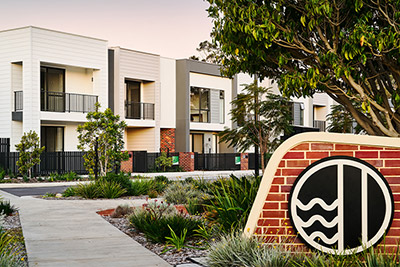Perth's changing population altering the properties being built
The Perth market has woken up in recent years to the need to deliver a much more diverse range of housing to cater to an evolving population.
The latest Census revealed that Millennials are overtaking Baby Boomers as the largest age cohort of the Australian population.
Known as the first generation to grow up in the internet age, Millennials are generally considered a tech-savvy, collaborative bunch who are more diverse and more mobile than any generation before.
This changing demographic in Australia has an impact on our housing market and the types of housing we are delivering for the future.
Household sizes are smaller than previous generations, with the most common living arrangement for Millennials, according to the Census, a couple household with no children.
While household sizes are smaller, Millennials still hold strong desires to own their own home and are likely to have two or more private motor vehicles.
So, what do these factors mean for the housing we deliver to the market?
Diversity is the key. A diverse housing stock that provides a range of living options in a range of areas is what we need to not only meet the needs of the Millennial cohort, but also our ageing population and all the different types of households that are seeking affordable and appropriate accommodation.
The Perth market has woken up in recent years to the need to deliver a much more diverse range of housing to cater to an evolving population. While the traditional 4x2 home on a larger block remains popular, there are a range of other options available to the market and developers are becoming more and more innovative in relation to the product mix they are producing.
The latest statistics released by the Australian Bureau of Statistics on multi-unit housing also reflect this trend, with commencements increasing across Australia, including here in WA.
In Western Australia, commencements of multi-unit dwellings have increased 21 per cent in the last quarter (September quarter 2022).
Awarding diversity
The recent UDIA WA Awards for Excellence were testament to the growing diversity in the local market, with projects from more traditional masterplanned communities right through to small townhouse developments in existing suburbs recognised in the prestigious awards program.
In fact, eight of the 13 project categories were won by projects being delivered in existing areas that represented a broad mix of home types.
In particular, medium density housing provides an offering to the market that is in between the traditional house and land package and a high-density apartment. Often referred to as the ‘missing middle’, this is a growing segment of the Perth market, and it is important to delivering housing choice more broadly.
Winner in the Medium Density Category, Canopy by Stockland, is a 2.84-hectare development made up of green titled, architecturally designed, terrace homes within the existing suburb of Glendalough.

Unlike traditional urban infill which utilise a strata title, lots at Canopy are green-title, which is achieved through a three-leaf party brick wall system of construction of the homes. This system of construction also maximises liveable area and energy efficiency of the home.
The success of a project like Canopy is testament to the changing market trends in Perth.
Another project featuring terrace homes won in the Small-Scale Development category. Park Terraces by Celsius Developments is part of the new Montario Quarter in Shenton Park and consists of 12 architecturally designed homes that are linked by a private communal garden.
The design of the communal garden has taken inspiration from English-style mansion houses that often share a private courtyard garden, encouraging residents to have incidental encounters with their neighbours and help foster friendships within the building.
While overall, the Perth property market has slowed this year due to a range of factors, primarily in relation to construction delays impacting on the supply pipeline, the demand for housing is expected to remain strong in the medium to longer term.
Factors that point to continued demand for housing in Perth and WA include the state’s strong economic outlook, low unemployment rate and relative affordability compared with its East Coast counterparts.
It is that relative affordability that is possibly of most interest to Millennials, given the likelihood that they will be able to own their own home has decreased significantly due to affordability pressures across the country.
Perth certainly offers an attractive investment option for this cohort if they are pursuing the home ownership dream.




















